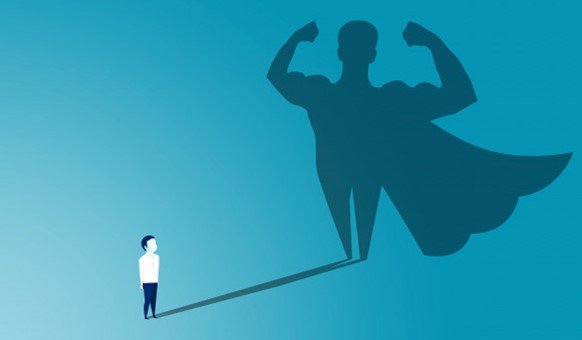Many people go through life in default mode, doing what comes naturally and reacting to situations without much thought.
The trouble with default mode is that it might not be the best mode for the situation. It might not be the best tool for the task at hand.
We can choose to be more intentional about how we show up in the world. There are different ways of being and acting, and it can be helpful to think of them like tools in a toolbox. By expanding our repertoire, we can be more effective in different situations.
Here are 13 modes of being and acting that I’ve been experimenting with and have found helpful. I hope you find them helpful too.
I like to think of these as ways of showing up to a situation, and the right one will depend on the context at hand. Here they are in no particular order:
1. Wonder Mode:
>>>Following your curiosity, stop to admire the beautiful and interesting things around you. Following your delight. I do Wonder Walks with my kids from time to time. It’s where we stop to smell the roses, take the detour, and notice things we wouldn’t have otherwise noticed. Wonder Mode is always an adventure, and you never know what you’ll discover when you follow your wonder.

2. Dummy Mode:
>>>Approaching situations with a beginner’s mind, being open to new ideas, and asking questions. Being OK with not having the answers. Seeking perspective, thinking outside the box, and asking seemingly dumb questions. This one is helpful in almost any situation whether consulting, sales, or just developing a relationship with someone. It’s hard to let go of “looking good” and be OK with “looking like a dummy”, but it often counterintuitively builds trust and learning breakthroughs.
3. Soaking Mode:
>>>Paying attention to your environment and your senses, and taking in all that’s around you. Think of this as being a sponge to your environment. This is using yourself as an instrument to take it all in. I use “Soaking Mode” when beginning with a new client, often times I’ll go walk around their office and take in what’s going on around me, listening to sounds and observing the sights. Or, sometimes I’ll just soak in the forest, taking it all in without distractions and with no other purpose than to be in it. To be present, with no real agenda other than to be a sponge. You never know what will come up with you’re in Soaking mode!
4. Flow Mode:
>>>Getting into the zone and focusing completely on what you’re doing. You’re not overthinking, you’re just going, just doing. Focus. Eliminate distractions. This is what psychologists call the Zone of Optimal Performance. It’s where you have at least 80% proficiency and are operating on that edge between thinking and just doing. Tip: it generally takes larger blocks of time to get into Flow Mode.
5. Judging/Questioning Mode:
>>>Evaluating and questioning ideas and situations. This is where ambivalence can come in handy. It seems this one should be used sparingly since it’s not a mode that inspires or engages people around you. However, it’s important to see where something might go wrong, or test assumptions.
6. Shalom Mode:
>>>Working towards peace and relational wholeness, both personally and in the world around you. Bringing a sense of hope, optimism, and joy to a situation.

7. Playful Mode:
>>>Experimenting, having fun, and being non-judgmental. This is participatory delight and joy.
8. Stretch Mode:
>>>Pushing yourself out of your comfort zone and embracing new challenges. It can be painful but it’s the good kind of pain, the growth kind of pain. The kind where you’re so sore after a workout that you can barely walk but you know your muscles are getting stronger and that feels good.
9. Ship-it Mode:
>>>Taking action and getting things done, even if they’re not perfect. Trust the soup, as Steven Pressfield says. Launch it. Ship it. Get it done. Wrap it up. Finish.
10. Meld Mode:
>>>Think of this as a “co-active”, participatory mode. This is ideal for when you are working with someone else to build something together. Use this when you are building a conversation, or a barn, whether you are coaching someone, or working on a new project. Meld Mode is a way of showing up in an “us making art together” kind of way.
11. Get Brave Mode:
>>>This stems from the quote I’ve come to use with myself and my clients, “What would I do today if I were brave?” It’s acting as if. My 5-year-old son used this recently after having stage anxiety about a Christmas performance at church. “Daddy, I decided to get brave and went up to sing.” Getting into Brave Mode has helped me during times of anxiety, fear, or uncertainty. Acting as if you were brave, helps you become brave.

12. Renewal Mode:
>>>It’s purposeful, intentional recovery and recuperation. “Renewal” is like active recovery. It’s different than sleeping or just vegging on the couch. It’s proactive recovery. Runners learn that there’s a build-up phase where you are stressing and stretching your system (Stretch Mode) and a recovery phase, and without both, you won’t optimize growth to your capacity. Embracing Renewal Mode, on purpose, helped my running performance, and it helps my life when I get into this mode regularly and routinely after periods or seasons of stress.
13. Celebration Mode:
>>>Taking time to appreciate and celebrate, on purpose. Whether it’s giving Five Claps when someone has a breakthrough during a workshop, handing out gold coins during a class, or designing a celebration when a client wins, embracing Celebration Mode and using it proactively is always fun.
———
There you have it, 13 Modes of Being & Acting.
Each of these takes practice to really get good at them. Some may come more naturally to you than others.
Switching between modes is also an art…
How might one of these benefit you right now? Which mode would you like to sharpen or practice more?